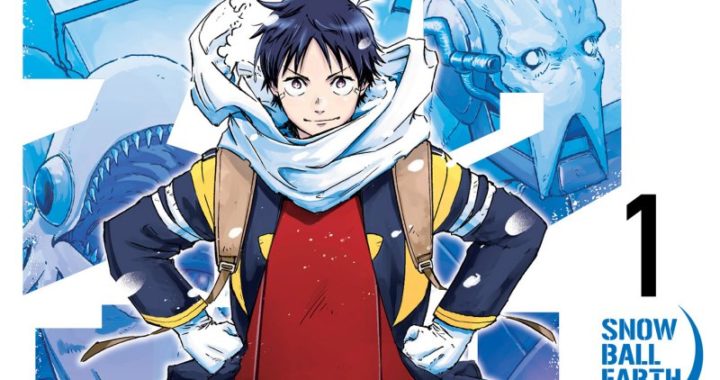JM: The use of BGM has also changed over time. The use of leitmotifs (short themes used to denote a specific person or event) has been a long-used technique in musical scores not just in anime but in practically every genre in TV and movies. You hardly see that in anime BGM anymore, especially from the 90s to the present. Or am I missing something?

BT: Those sorts of musical cues are something that has slowly faded from most Western TV and movies as well. It’s definitely something that sets eras apart.
DA: The instrumentation of BGM can add to the timelessness of a title. A massive orchestral soundtrack like that of Giant Robo is as classic as a score by Bernard Herrmann.
GBS: It is interesting how they are less and less common. I can only think of a few shows that are relatively recent that still make use of some leitmotifs, though they tend to be used for a group of characters rather than a single one or are tied more to a certain mood that pops up often in a show.
While the show varies in its different editions, the Saki franchise does have a set of recurring background themes that serve to tie it all together. There is a common theme that sets a contemplative mood, one that denotes action and conflict and several others. The main characters Saki and Nodoka do have their own little themes as well, as do some of the other major characters, though they are not quite as noticeable. Perhaps this is a somewhat retro element to the franchise.
BT: One show uses leitmotifs to perfection, and it’s recent: Kill la Kill. Part of the timelessness of that show in one way.

GBS: It certainly does, but before we lose our way talking only about music, perhaps we should look at another aspect of what makes a show feel old or new, one that Jimmie brought up briefly near the beginning: how well it holds up to being seen again. And again.
BT: That old rewatchability tends to keep some titles younger than others. But this may also be a very subjective measure.
DA: It’s completely subjective, really. Essentially what makes a show rewatchable? If you like it. I can always rewatch Fruits Basket or Haibane Renmei, but I can’t think of an individual element from them that makes me want to rewatch them.
GBS: It does bring up a question: do “One-trick ponies” and shows that rely upon a “gotcha!” plot twist age more quickly than shows that lack such single-use surprises?
BT: I think those types of titles age more slowly because they’re more memorable. But only if that trick is so expertly done, or is so revolutionary.
GBS: So shows like Code Geass age better?
JM: I’ve only seen Code Geass once and then several years ago but I do remember it as being in my opinion good but not outstanding. CLAMP’s character designs were an initial hook for me and I think they might be appealing to new viewers just discovering the show now.

BT: CLAMP’s influence does tend to traverse a couple generations of viewers.
GBS: It may be that certain creators’ reputations and followings can trump the whole “old” and “new” distinction, as their works have a timeless appeal.
DA: Though, it’s not necessarily universal across all of a creator’s creations. Cardcaptor Sakura may still be getting new fans, but I can’t imagine that RG Veda doesn’t seem old to today’s readers.
BT: Another one might be Rumiko Takahashi, in some sense. Fans from the early 80s through this decade would be very familiar with her. And we maybe can’t discount the recent resurgence—and still solid popularity—of Ranma ½, from Viz’s new remastered releases.
GBS: Unfailing appeal from a single author or group of creators is hard to find. Looking at the long term track records, Takahashi certainly comes close, though perhaps the well has finally run dry with her current work Rin-ne? It’s still a major seller, but it began in 2009 and there hasn’t been a whisper about an anime. It doesn’t prove a lack of popularity but it’s a fairly easily to point to indication of a lack of high popularity.
BT: Same time, while certainly InuYasha, and even Ranma, may not be considered too old, something like Maison Ikkoku, or Urusei Yatsura, is. Creators don’t get that easy of a pass. And UY was considered old, I think, even 15 years ago when it was finally released on DVD in North America.

GBS: I wonder if this is entirely the case with the most recent wave of fans? For us, InuYasha certainly isn’t old. But what about someone who came into anime around 2010?
BT: If they came in from TV, they may still have so familiarity with it, I think. But still being just “before their time” it would be on the cusp of being clearly in the past. Still relevant, though.
GBS: True, considering the endless repetitions on the Adult Swim broadcast block.
DA: Weird to think that we’re nearly to the 20th anniversary of the beginning of InuYasha’s manga run.
GBS: That long ago? That might be before a good number of recent entrants into the fan ranks were even born.
G.B. Smith
Greg Smith has been writing anime reviews and a review column on anime dubbed into English for several years, first at AnimeOnDVD and now for The Fandom Post. His occasional column on English anime dubs, Press Audio, appears whenever he comes across a dub worthy of a closer look. He is also the deputy editor for our seasonal and year end retrospectives.



